Search Results for Tag: Oceans
Sharing Arctic ocean data
This week I had an interesting conversation with Professor Karen Wiltshire, who is deputy director of Germany’s Alfred Wegener Institute for Polar and Marine Research. Last time I talked to Karen was on the German North Sea Island of Helgoland, where she is also head of AWI’s Biological Institute. “Jellyfish and chips” is the theme of the article I wrote then about the institute’s research into the impacts of climate change on the North Sea. Tasty?
This time, I was interviewing her on a wider issue, which also has direct relevance to the Arctic. She has taken over the chair of the “Partnership for Observation of the Global Oceans”, or POGO for short, for the next two years. The Directors of the group just had their annual meeting in Tenerife, on the Canary Islands. POGO, Karen told me, is one of the oldest international organizations set up to link partners interested in observing the world’s oceans. It includes all the world’s key marine institutes, including AWI, Woods Hole, Scripps and institutes from China, Korea and Russia.
The directors meet once a year to discuss issues which can be tackled in a coordinated manner. This includes things like research vessels and monitoring marine protected areas.
Exchanging Arctic Data
But one issue which could bring a lot of benefits in particular to scientists working on the Arctic, is the decision taken at the Tenerife meeting to set up a new platform to link up all the long-term ocean data sets in the world. At the moment, Professor Wiltshire says scientists often don’t know of the existence of a lot of data:
“Some of it is very high quality. For example in northern Russia, in the Arctic Ocean, there’s a lot of data that’s not so easily accessible and available. But if our Russian partners just put a flag on the map saying we have this data, and you can come to us if you need it, it would already help us scientists a lot.
“It’s kind of like making a giant inventory of what’s out there, and of what has been measured for the last hundred years. The next step would be to link important oceans with one another, the Arctic and the Atlantic, and look how they have changed relative to one another, and set up hydrographic models linking these oceans. Those models already exist, but with a better data base we might be able to check the rigor of these models, also relative to the melting ice caps. So the first step is to inventorize what’s out there, and then link data sets, variables and ocean areas.”
Russian data is key
This brings me back to conversations I had on my recent Arctic expedition on the RV Helmer Hanssen. Stig Falk-Petersen, the cruise leader, from Norway’s Arctic University of Tromso, stressed to me just how much research on the Arctic has actually been conducted by Russian scientists. In the past, this was rarely translated, so not available to the majority of the international research community. Things have changed since the end of the Soviet Union, Stig told me, and it became easier for western scientists to work with their Russian colleagues.
“And what we discovered then, was that the Russians know all about our famous polar explorers Nansen and Amundsen, but we new nothing about the Russians. Yet the Russians have a fantastic record of science in the Arctic. Since 1937 they have had these drifting stations, they flew out from Novaya Zemlya and landed on North Pole with four engines, Antonov planes, and established an ice camp. And they drifted out the Fram Strait. They have done this nearly every year until recently. So all we know about the Arctic , the topography, situation of water masses, animal life, benthic life, is actually based on Russian expeditions. And this is still poorly known in the west.”
Modern ice drift
Stig is a great fan of a current drift venture, the Fram 2013-2014 expedition, which is more or less repeating that of the first Russian drift station.
The Norwegian scientists Yngve Kristoffersen and Audun Tholfsen are living and working on their ice drift station, including the hovercraft “Sabvabaa”. It was taken and placed on the ice by the AWI’s research vessel the Polarstern, demonstrating once more the benefits of international cooperation in science. The two men have been taking sediment cores to learn about the polar environment more than 60 million years ago. Since August 2014 they have moved northwards along the submarine Lomonosov Ridge. You can follow their progress online at Geonova. Let me just quote a little from their latest diary:
“The length of Lomonosov Ridge ( ̴1.800 km) is roughly equal to the length of Norway. We have now spent 5 months drifting over the Lomonosov Ridge and been able to get new scientific data over a section which constitutes 1/4 of the total length of the ridge. Our drift shows a pattern with periods of very slow ice drift interrupted by events of fast drift. The fast drift is forced by cells of low surface air pressure moving in to the Arctic Ocean over the Canadian Arctic Islands as lately or through the Fram Strait. As they move in, the wind direction drives the ice to the west. These events, unpredictable on a time scale of months, make it impossible to estimate with some degree of confidence where we will be when it is time for Audun to rotate off in late March/April or when we will approach the ice edge in the Fram Strait.”
The data recorded by the scientists is transferred automatically to the Nansen Centre in Bergen. Stig tells me it includes some spectacular underwater videos going right down to the sea bottom, 2000 metres. He and his colleagues are eagerly awaiting a look at the data.

Data from polar orbit satellites is received and processed at KSAT in Tromso. I was able to visit in January. (Pic. I Quaile)
These days, modern technology, from satellite monitoring to a network of buoys moored around the world’s oceans, some with remote data transmission, provide an increasing amount of new data to be shared and analysed. But to understand properly how the oceans are changing, we need data from the past to compare it with. This brings me back to my interview with Karen Wiltshire.
I asked her whether there wasn‘t a danger that research is not able to keep up with the speed of change? Here is her answer:
“There’s very much the danger of that. One of the most important things is having consistent long-term observation. We need to link up old observations, be it whether somebody stood at the end of a dock and measured salinity for a time, in the late 1800s or so, through to now, where we have modern ways of measuring. These things need to be linked and compared to each other to find out whether what you are looking at is related to a real trend or shift, or is just an anomaly in the system. One has to be very mathematically oriented and creative in doing so. Very often, for example in the Wadden Sea, (off the coasts of Germany, Denmark and the Netherlands), we even use historical anecdotes written down in the annals of churches, for example, to look at how the weather was at a certain time, whether we had an ice winter or not. The more information we have from the past, the better it is. Then we’re in a better position to interpret modern-day data, which might be of very short duration in comparison to the long sets of data out there.”
So the new project to link the world’s oceanic data could be a very important step forward. Here’s to success for the latest POGO venture!
You can listen to the interview with Karen Wiltshire on this week’s Living Planet programme, or by itself here.
Vulnerable Arctic Treasures

Vulnerable Treasure: Icebergs in Disko Bay, Greenland

Vulnerable Treasure: Chukchi Sea, Alaska
There was plenty of icy news awaiting me when I got back from my spring break. One of the items was entitled “On thin ice: vulnerable Arctic treasures identified”.
![]() read more
read more
On the trail of the truth about Greenland

Running for campus…
Let me recommend you a website and the book it’s based on.I’ve seen it here and it’s very impressive:Arctic Tipping Points
is the title, and it contains some beautiful and in some cases moving images relating to climate change and the Arctic. The editors are Carlos Duarte (quoted in earlier post) and Paul Wassmann (University of Tromsö.

(No tipping point for these swings)
I have been following the presentations dealing with the Greenland ice sheet closely. Sometimes it is a little frustrating when speakers hint at important results of studies which they cannot reveal fully ahead of publication. If you guys are trying to increase the suspense and arouse my interest in reports coming out in the next few months – you have succeeded. On the other hand, it seems a pity, with quite a few journalists sitting in the conference, that we can’t use the opportunity to pass on some interesting results. Unfortunate timing, it seems some of the reports were originally planned to have been ready. But let me sum up what I can here.
Peter Wadhams, Professor of Ocean Physics at the University of Cambridge introduced the strain of the conference dedicated to “ice-ocean-atmosphere interactions in the Arctic”. He refered to very large changes on the Greenland ice sheet, with very large areas of melt occurring in summer and a substantial net flux of fresh water into the sea every year. Now that is one of the key factors in measuring the changes. He told us the amount was almost the same as the total melt from mountain glaciers, suggesting this could be making a comparable contribution to global sea level rise as melt from all the rest of the glaciers in the world put together. He stressed the rate of melt on Greenland is accelerating and scientists just don’t know how the acceleration rate will continue.
Lars Otto Reiersen is the Executive Secretary for AMAP, the Arctic Monitoring and Assessment Programme. He reported on the SWiPA (Project) (Snow, Water, Ice and Permafrost in the Arctic), which is preparing a report to be presented to a meeting of Arctic ministers in May. (sigh!) Suffice it to say, he indicated that when it comes to the mass balance of the Greenland ice sheet, the updated figures will show even higher melt. All will be revealed in a few months, it seems. And it will not be cheery reading.

Late afternoon impression of Tromsö campus while the weather was still beautiful (some like it cold). It is thawing at the moment, but forecast to cool again soon.
Census of Marine Life in the Arctic and Antarctic
The Census of Marine Life, which is an ongoing project to document life in the oceans, has published some interesting findings about species in the Arctic and the Antarctic, and changes caused by climate change. It’s hardly surprising that cold-water-loving species are migrating towards the Poles to escape water that has become too warm for their comfort. The results are based partly on some amazing resarch voyages during the international polar year.
It’s well worth a read. And there are some amazing photos and video sequences.
Arctic and Antarctic species online
Cool Forecasts – a Hot Topic?

They have no doubt that the planet is warming: Arctic explorers Marc Cornelissen,head of the Climate Change College, and archaeologist Anne Jensen, who rescues historic burial sites from being washed into the sea as a result of coastal erosion. (The sea ice is a natural protection barrier. As it diminishes, the land is left more vulnerable to the elements). I took the photo at Point Barrow, the northernmost point in the USA and well into the Arctic Circle.
People here in Germany are talking about a new study published in the journal Nature last week suggesting a possible lull in man-made global warming. (More in the “eco-news” bulletin which Nina Haase wrote for this week’s Living Planet programme):
This week’s “Eco-News” by Nina Haase
Scientists and politicians are worried that this might make people think they don’t have to rush to take action after all. The study doesn’t dispute the human role in global warming, but it predicts a cooling down from recent average temperatures between now and 2015, as a result of a natural and temporary shift in ocean currents. Now, experts on the Intergovernmental Panel on Climate Change are worried that people might become relaxed again about reducing emissions. There’s no doubt about the fact that people are more likely to take action if they see clear evidence of climate change and are worried about droughts and floods.
(Ines, I thought of you this morning when I read in the paper that Barcelona is relying on tankers bringing in drinking water.)
I was on a panel at an event here in Bonn today where some of the journalists – discussing the role of the media in reporting on climate change – said doubt had been cast on the methods used in the “cooling” report anyway.
In the hope that it might convince some more undecided readers of this blog (I realize of course I could be preaching to the converted with this), I’d suggest a listen to George Divoky, a dedicated ornithologist working on Cooper Island, in the Beaufort Sea north of the Arctic town of Barrow. George has been observing guillemots for 33 years and has quite clearly seen the evidence of climate change. The interview is attached for your listening pleasure. It’s also featured in our Living Planet programme this week.

This shows climate ambassador Cara, talking to a young eskimo,Kayan, who told us he is very concerned about the warming climate and the changes to the sea ice on which the eskimo culture depends so much. Cara is also on this week’s Living Planet programme.

Trying to look at ancient burial sites at Point Barrow. This shows typical everyday working conditions for scientists and other experts trying to keep track of coastal erosion and the ancient sites in danger of disappearin there.



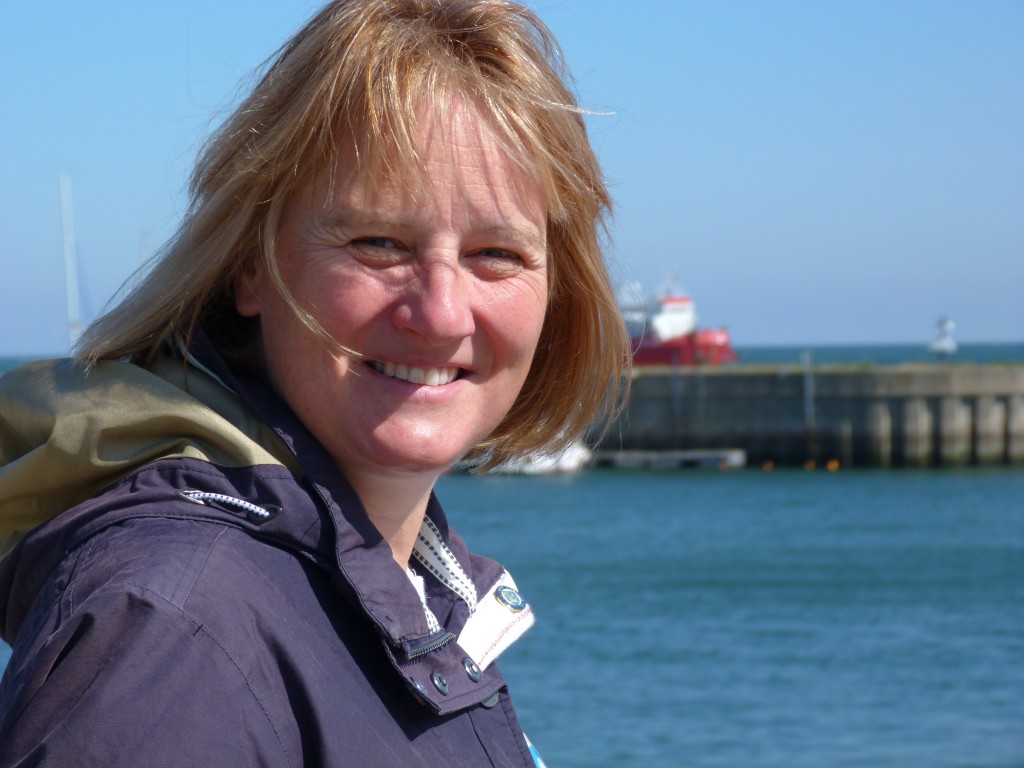
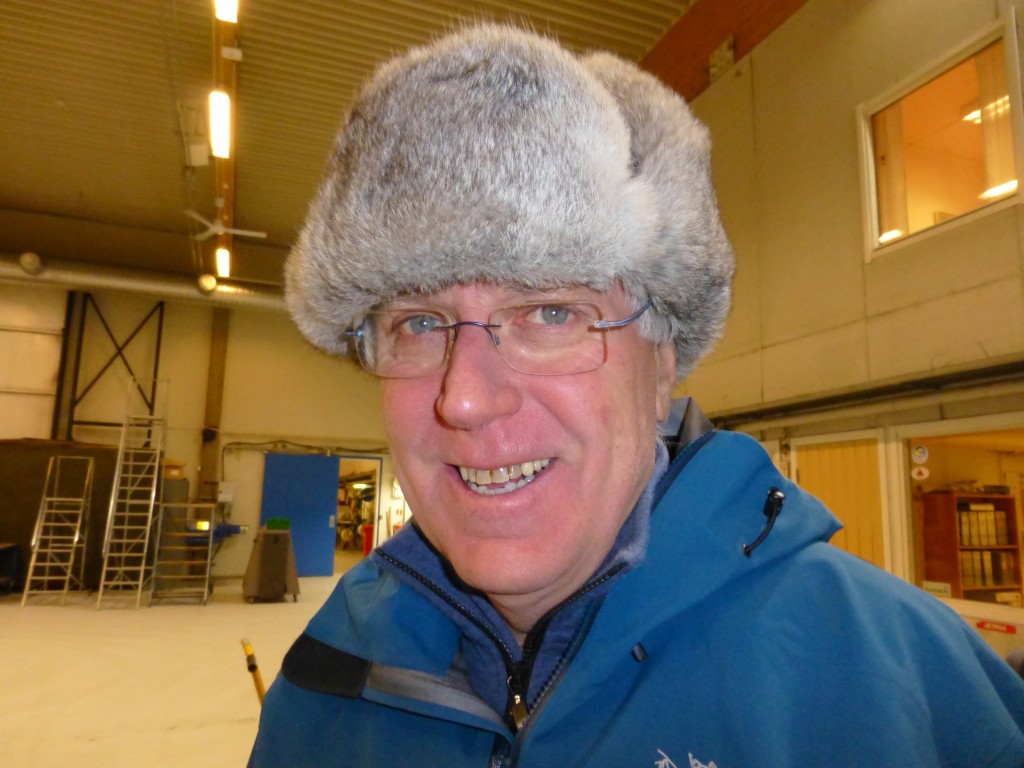





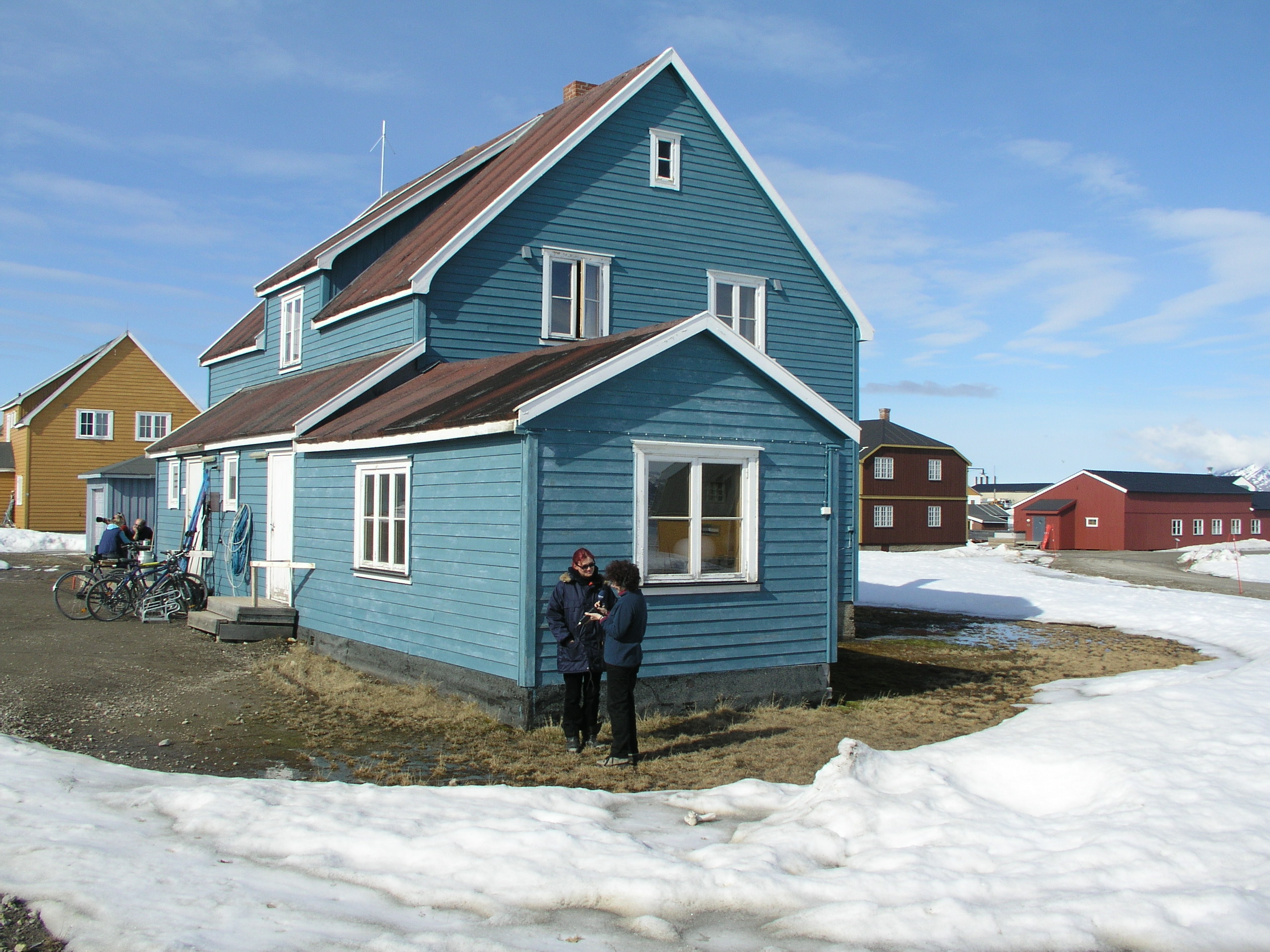

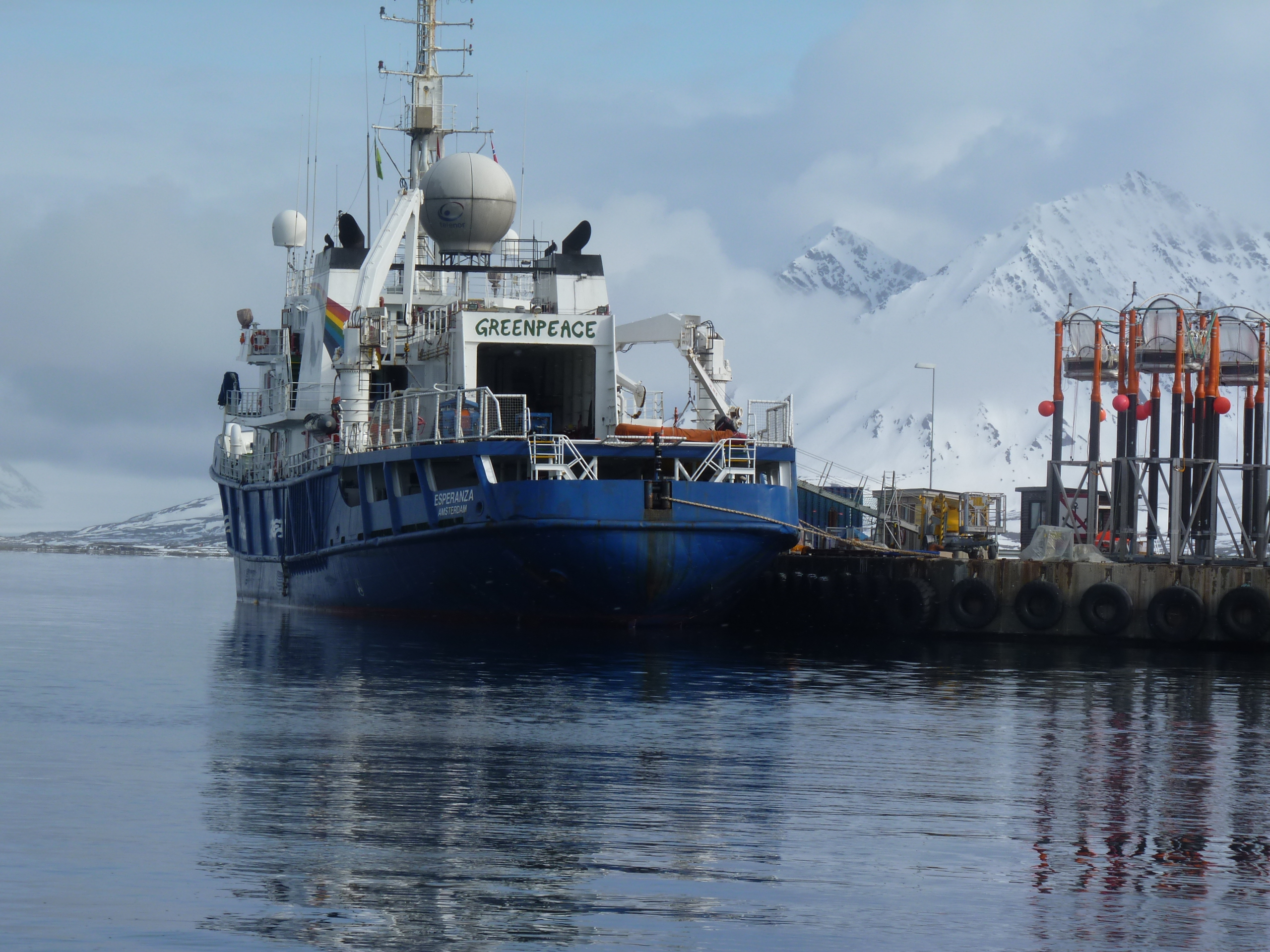
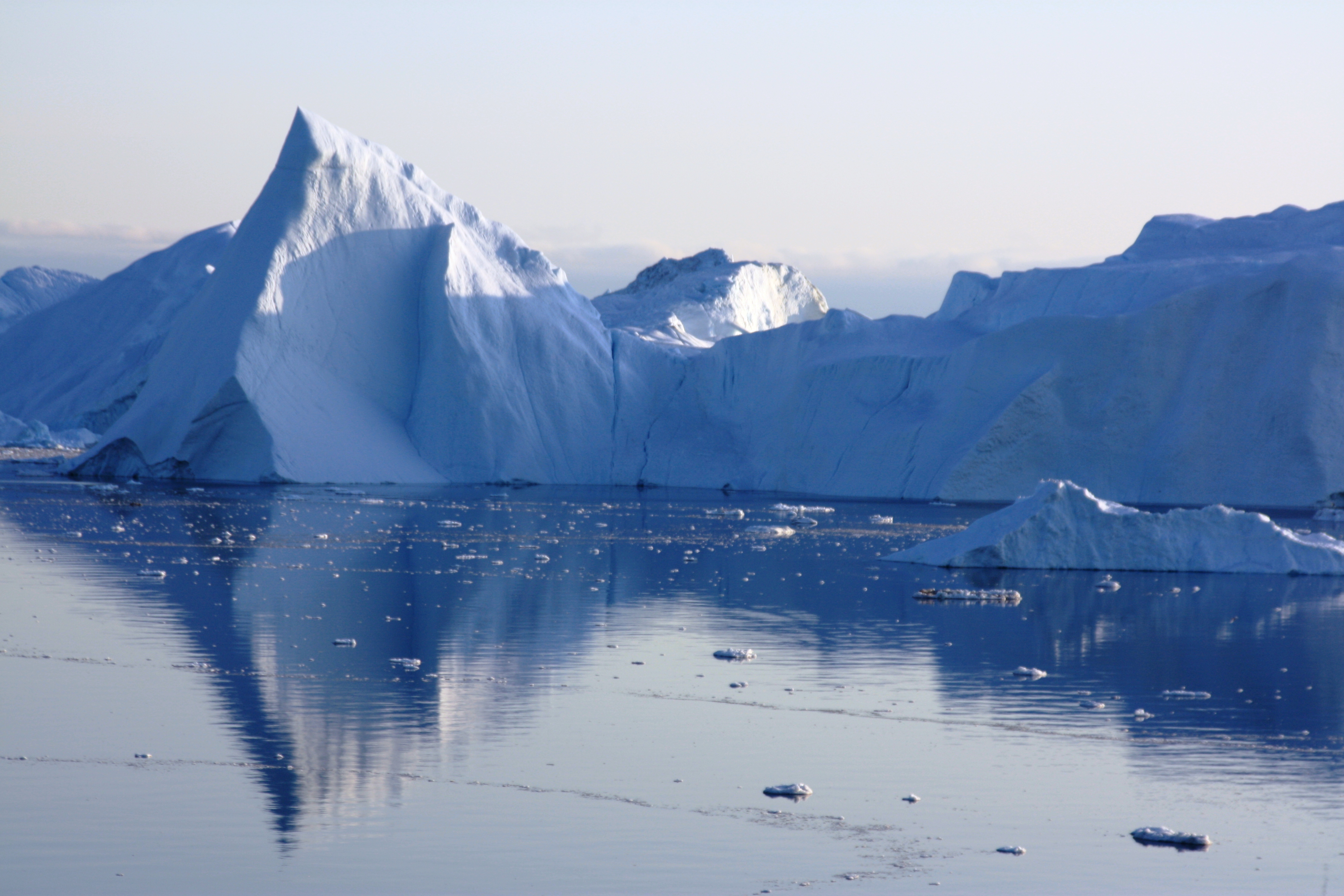




Feedback